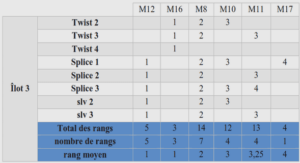State and Local Government Revenue and Expenditure Rankings
Introduction This paper presents information on Wiscon- sin’s rankings among all states on state and local taxes, other revenues, and expenditures by state and local governments. The data used in calculat- ing the rankings is from the U.S. Census Bureau’s publication « State and Local Government Fi- nances. » The Census data is the most complete information available, and covers government revenues and expenditures in all 50 states, the District of Columbia, and local units of govern- ment. A drawback of this data, however, is that it is somewhat dated. The most recent figures were released in December, 2016, and cover state fis- cal year 2013-14, which ran from July 1, 2013, through June 30, 2014, in most states. Therefore, there is a lag of more than two years between the end of the period covered by the data and its re- lease. Other organizations, such as the Tax Foun- dation, issue more timely tax rankings, but their figures are based on projections rather than actual collections. Also, the Tax Foundation does not prepare detailed estimates of state and local gov- ernment expenditures. Another potential draw- back of the Census data is that states may differ in how they report certain revenues and expendi- tures, such as refundable tax credits. Despite these limitations, the Census data is the most ac- curate information available for calculating state- by-state revenue and expenditure rankings. shown for the calendar year in which the fiscal year began, and population amounts are shown for the calendar year in which the fiscal year ended. This paper primarily focuses on Wiscon- sin’s most recent tax and expenditure rankings, and also presents information regarding historical trends. The remainder of this paper is comprised of five sections. The first section presents an over- view of how state and local revenue and expendi- ture rankings are calculated and the second sec- tion provides information about Wisconsin’s population and state personal income. This is fol- lowed by sections covering Wisconsin’s rankings on state and local government revenues and ex- penditures. Finally, the last part of the paper in- cludes a number of attachments, which show population, personal income, revenue, and ex- penditure rankings for all 50 states and the Dis- trict of Columbia. The attachments also present historical information on Wisconsin’s state and local government revenues and expenditures.
Calculation of Revenue and Expenditure Rankings
Per capita revenues or expenditures are calcu- lated by dividing total revenue collections or government spending by a state’s population. Revenues or expenditures per $1,000 of personal income, which is generally believed to more ac- curately reflect the ability of state residents to pay taxes and fund government expenditures, is calculated by dividing total revenue collections or spending by total state personal income and multiplying that result by $1,000. State personal income is a broad indicator of the size of a state’s economy. It measures income from current pro- duction and includes wages and salaries, fringe benefits, personal interest and dividend income, rental income, proprietors’ income, and public and private transfer payments to individuals. Employer and employee contributions for social insurance are subtracted and capital gains and losses are not included in calculating personal income. In comparing revenues and expenditures across states, it is important to include both state and local governments, because there are signifi- cant differences among states in the mix of state and local revenues used to fund various pro- grams. The extent to which the state deviates from the U.S. average for each measure is also noteworthy. A relatively high or low tax or ex- penditure ranking may be viewed as less of a concern if the state is close to the national aver- age than if it significantly differs from the aver- age. Wisconsin’s population grew by 11.3% be- tween 1995 and 2015, an average increase of 0.5% per year. In contrast, the population for all 50 states and the District of Columbia rose by 20.7% (0.9% per year) during that period. Wis- consin represented 1.9% of the nation’s popula- tion in 1995 and 1.8% in 2015. Wisconsin’s pop- during this period, which ranked 32nd highest and was less than the 3.6% growth rate for the entire U.S.



